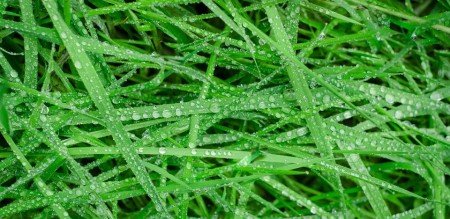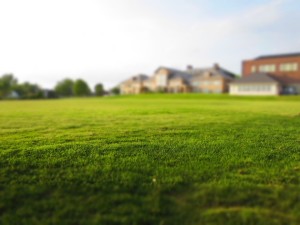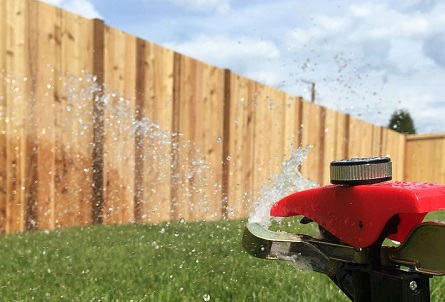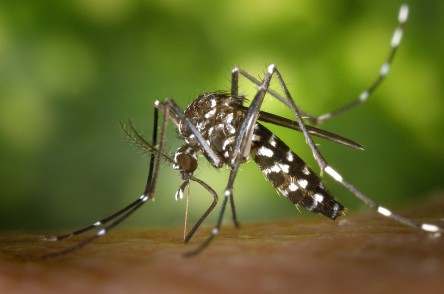History of Sod – Sod Houses
Friday, December 16th, 2016When people think back on the olden days, everybody pictures the log cabins that appear as part of America’s history in some of the oldest photos available. While it’s true that trees did serve as the home retreat for many settlers during our country’s infancy, another of Mother Nature’s materials was also widely used among pioneer families to make homes: Sod.
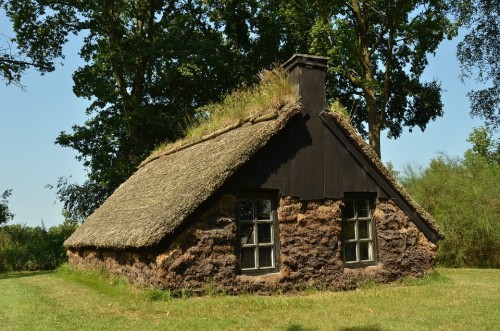
Bark and branches were fantastic when they were available, but not every part of our country had access to ample amounts of trees. In fact, there were areas where people could go for miles upon miles without spotting a single tree. As settlers traveled across the plains and prairies of the central and western United States, they were forced to get a bit more creative with their natural resources. In these barren lands where the idea of forests was purely fictional, homesteaders turned to the ground beneath their feet to build roofs over their heads.
How Sod Homes Were Made
It all started with the strong, intricate root systems of plains grass. Holding the earth beneath them in their tight, compact grip, the roots served as a starting point for what would later become sod bricks. When the earth was soft and moist, particularly after a good rain in the summer or a spring thaw of melting snow, settlers would use ox-drawn sod cutters to plow the land and break up the earth. These sod cutters were particularly designed to cut the clumps of dirt into long and narrow pieces. From this point, the settlers used axes to chop the strips into brick-sized pieces. Just as you would expect, these sod bricks were then stacked vertically, one by one, side by side, forming the walls of settlers’ sod homes.
Once the walls were constructed, the structures were usually topped with roofs made from interlaced twigs, hay, thin branches, or other readily-available natural resources. The final touch often included another layer of sod atop the twigs and branches as a finishing touch. It wasn’t uncommon to see sod homes built into the sides of hills or banks. This saves the settlers time and energy, as they could dig away the earth at the side of the incline, using the dug-outs to serve as portions of the homes’ walls and roofs.
Why Sod Homes Worked
For starters, any shelter is better than no shelter at all. Prairie grass and the surrounding sod was readily available in certain parts of the country, and it served its purpose in providing walls and a roof to those who needed them. Because sod was available in ample supply, these houses were cheap to make. Their earthen construction also worked well in accordance with seasonal temperature changes; they were often warm in the winter, and they usually stayed cool in the summer months.
Why Sod Homes Didn’t Work
Alas, you’re not likely to look around and see tons of sod homes as you’re driving to and from work these days. As it turns out, sod homes had some significant deficits, despite doing their best to keep settlers warm, safe, and dry. Of course, being that these homes were made completely of grass and dirt, snakes, mice, and other critters saw no problem calling these houses their homes. Rattlesnakes were known to move in and become unwelcome roommates, and there wasn’t much the settlers could do about it.
These earthen structures were also susceptible to the elements. Leaky roofs were quite common, if not completely expected. Once water found its way into the homes, the dirt floors became muddy messes. Naturally, the sod that comprised the roofs, when wet, became quite heavy as well. Collapses and cave-ins were common in the days after big rains, as the layers of earth took days to dry out, and the structures weren’t often sturdy enough to withstand the heavy sod tops.
All in all, sod homes did their duties until something better was able to be built. Although they certainly weren’t meant to last for lifetimes, America’s early settlers learned to love sod in their own rights and rely on this great material that our Arizona Turf team prides itself on today.
Did our story about sod houses and settlers teach you something new about our country’s history? We’d love to hear your thoughts at our Evergreen Turf Facebook page!

